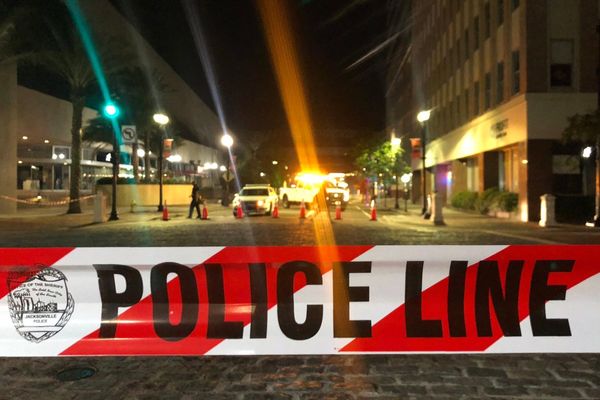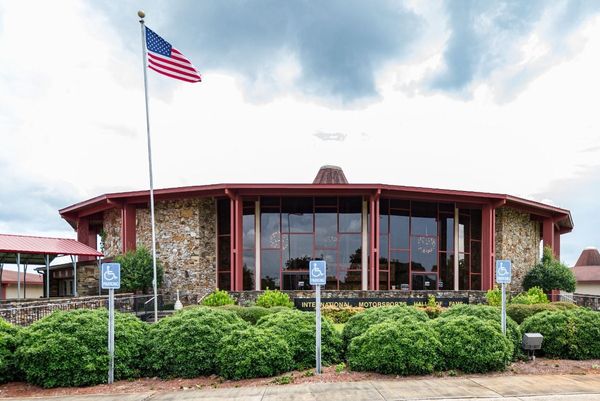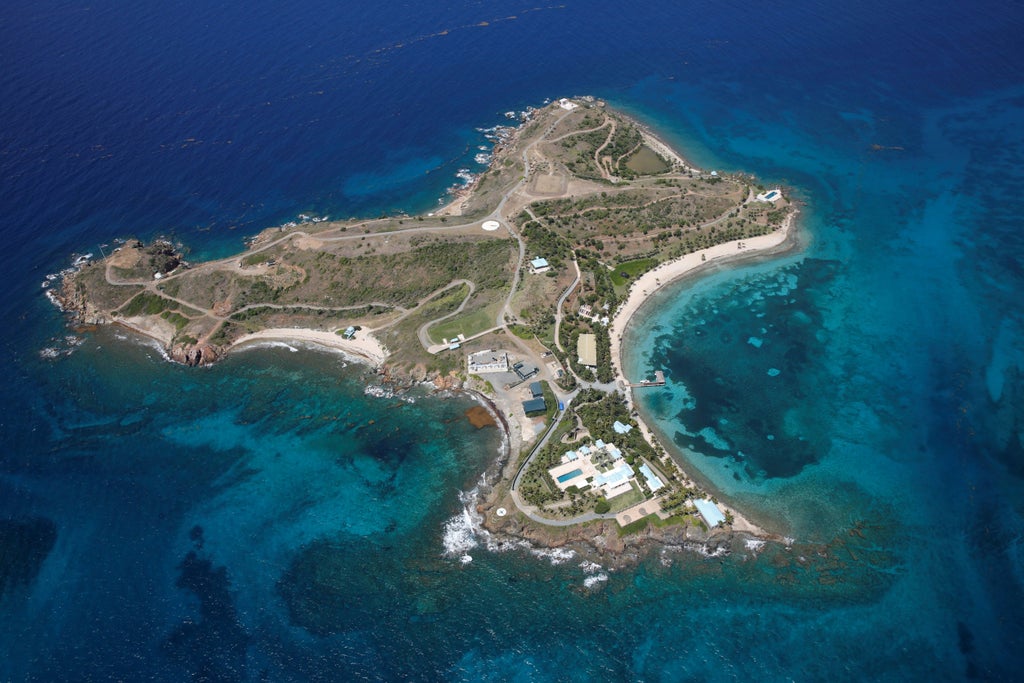
The guests came from across the world, and from the highest ranks of society: celebrities and scientists and members of royal families, touching down in a private jet and then boarding a helicopter to the island. Its owner liked to call it "Little St Jeff"; locals called it "paedophile island".
But what is the truth about Little St James, the 75-acre private paradise in the US Virgin Islands that billionaire sex abuser Jeffrey Epstein once called home?
The island is now at the centre of a web of lawsuits and criminal investigations seeking to untangle the life of Jeffrey Epstein, who died in prison in 2019 at the age of 66 in what authorities claimed was a suicide.
A criminal complaint from the attorney general of the US Virgin Islands, which is attempting to seize Little St James as government property, described it "the perfect hideaway and haven for trafficking young women and underage girls for sexual servitude, child abuse and sexual assault".
On this island, the compaint says, "Epstein and his associates could avoid detection of their illegal activity from Virgin Islands and federal law enforcement, and prevent these young women and underage girls from leaving freely and escaping the abuse."
Here is everything we know about Little St James and what Epstein did there:
Where is Jeffrey Epstein’s island and what is it like?
Little St James is a small island fringed by coral reefs in the bright blue waters of the US Virgin Islands, with sheltered inlets and forested groves rising to dramatic windswept ridges and craggy cliffs. It lies just off the south-eastern tip of St Thomas, one of the Caribbean archipelago’s three main islands.
The Virgins were purchased from Denmark by the US government at the height of the First World War in order to stop them being used as a German submarine base. Today many financial experts regard them as a tax haven, with huge discounts on corporation tax and personal income tax available to companies based there.
It was in the Virgins that Epstein registered as a sex offender in 2010, following his first conviction for child prostitution in 2008. He also based his shell companies in a small unmarked office in a seaside strip mall on St Thomas, alongside a Sam’s Mini-mart and a salon called Happy Nails.
In 1998, he bought Little St James from venture capitalist Arch Cummin via a shell company, reportedly paying just under $8 million (£6 million). The new owner quickly scoured away all the native vegetation and replaced it with 40-foot palm trees.
Starting in 2007, Epstein began a massive programme of building and remodelling that drew suspicion from local officials. His main compound nearly doubled in size, sprouting into a plush mansion with an outside terrace connecting the master bedroom and the swimming pool, along with a desalination system.
Satellite photos show a sprawling network of terraces, cottages, beach houses, swimming pools, docks, utility buildings, a helipad, a tennis court, slipways, some kind of enclosed lake or lagoon, and various huts of unknown purpose, all connected by palm-lined roads where golf buggies ferried guests from place to place (a journey across the island reportedly took about five minutes).
Stunning drone footage posted on YouTube offers a closer look, with a huge sundial at the centre of the island big enough to walk around on and two tall American flags posted at opposite ends of the island.
At the other end from Epstein’s manor is a squat, boxy blue and white striped structure often referred to as a "temple", surrounded by a terrace with a red labyrinth motif. It previously had a golden dome and two gold statues on its roof, which were reportedly torn off in Hurricane Maria.
The building differs greatly from Epstein’s original planning permit for an octagonal music pavilion, and has become a lightning rod for fevered speculation. Theorists have variously described it as the entrance to an underground lair, an altar to an Egyptian deity, a burial ground for his parents, or a site of ritual sexual abuse, but an investigation by Business Insider concluded that it was most likely a private study and music room for Epstein.
In 2016, Epstein also bought the neighbouring island of Great St James, about twice as large at 165 acres, allegedly pretending that the real buyer was a Dubai businessman named Sultan Ahmed bin Sulayem. “He wasn’t well received,” one St Thomas resident told the Associated Press. “People think he’s too rich to be policed properly.”
What was life like on the island?
In the days before his 2008 conviction, Epstein would visit Little St James two or three times a month, staying several days at a time. One former employee described it as "a Zen-like retreat" where the financier would stroll around in flip-flops, with "meditative music" playing from speakers and the women often sunbathing topless.
There were always women, of course: frequently attractive, sometimes suspiciously young, on the arms of Epstein or one of his many guests or, sometimes, ferried over in groups aboard a 38-foot boat called the Lady Ghislaine, reportedly after Epstein’s longtime associate Ghislaine Maxwell.
The island had a staff of about 70, from groundskeepers and gardeners through laundry ladies to on-call boat captains. They wore black or white polo shirts and were sworn to strict secrecy, with instructions to stay out of Epstein’s sight when doing their work. They were also forbidden to enter either of Epstein’s two offices in the main manor, one of which housed a closely guarded steel safe.
According to the LA Times, Epstein also had an enthusiasm for "pirate treasure", his name for old rum bottles and crockery found about the island. He would pay servants between $100 and $1,000 for interesting finds in good condition.
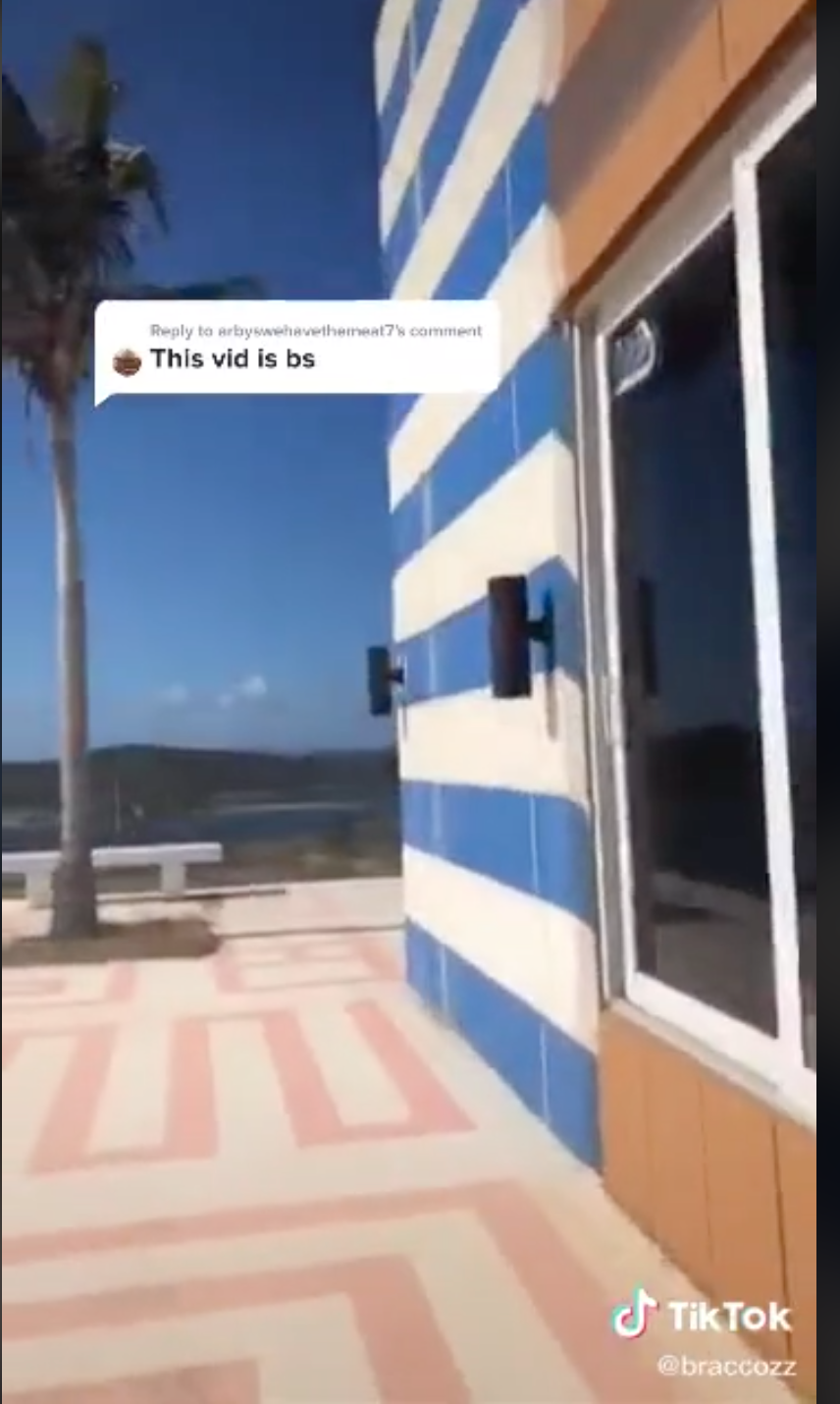
"He was a very kind man and, while I don’t approve of things he’s been accused of, I liked him very much," Miles Alexander, who together with his wife Cathy ran the island between 1999 and 2007, told the Daily Mail. "Our job was about discretion. We have a clear conscience that we didn’t witness anything untoward."
The South African couple described how Epstein did not like to eat meals in front of people, instead taking snacks to eat in his room, and would receive daily massages in his room. Disturbing him there was "absolutely forbidden", although they did once find a box of sex toys while he was out.
When they were hired, the Alexanders say they were told: "What Jeffrey Wants, Jeffrey gets."
Who did Epstein host on his island?
Of course there were always guests. Among the famous names reportedly hosted by Epstein were theoretical physicist Stephen Hawking, Nobel laureate Lawrence Krauss, comedian Chris Tucker, actor Kevin Spacey, Victoria’s Secret magnate Les Wexner, model Naomi campbell, former Tony Blair aide Lord Peter Mandelson, and Prince Andrew of the United Kingdom.
It has been claimed that Bill Clinton was also a guest, though he denies ever having been there. Donald Trump reportedly flew on one of Epstein’s private jets, but it is unclear if he visited the island. The magician David Copperfield is even said to have proposed to supermodel Claudia Schiffer there.
Guests would arrive on one of Epstein’s Gulfstream jets at Cyril E King Airport on St Thomas, in a private area separate from the main runway. They would then be shuttled to Little St James on one of Epstein’s black helicopters.
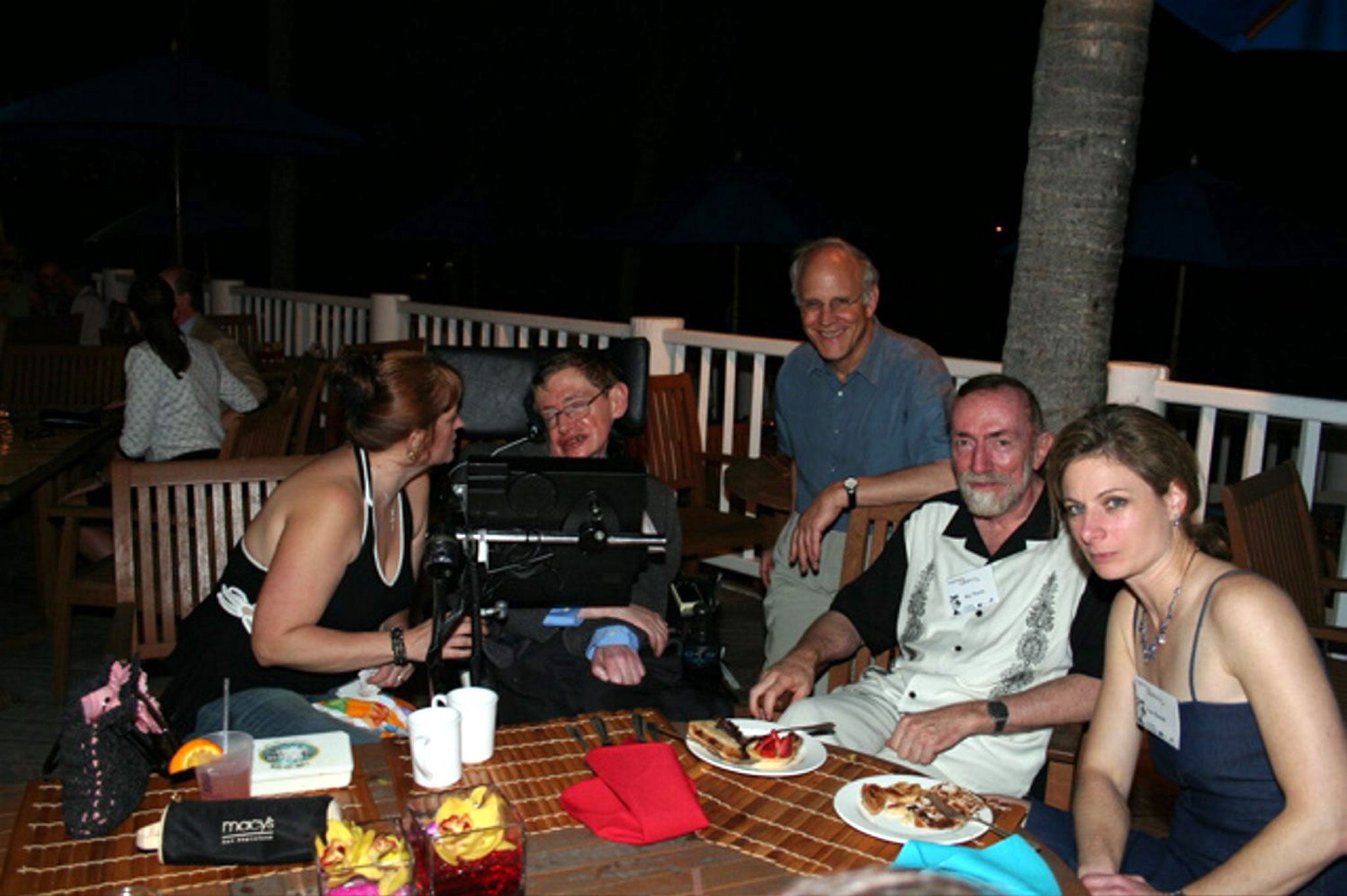
Epstein was fond of treating the guests, reportedly paying for a submarine to be modified to give a sea bed tour to Prof Hawking, who had never been underwater before. One former employee described it as "like a five star hotel where nobody paid".
Cathy Alexander remembers Prince Andrew as one of the more gracious visitors, describing him as "great fun and very undemanding". One day he returned from the beach in "great mirth": one of his companions had stepped on a sea urchin and he had urinated on her foot to salve it.
Ms Alexander recalls him slipping her a $350 tip – which was "unexpected, because other guests didn’t".
Didn't anyone notice Epstein's alleged sex trafficking?
Certainly they did. From the start, locals on St Thomas whispered darkly about Epstein’s activities, calling his private jets "the Lolita Express". When scuba divers swam near the island, security guards would reportedly appear to patrol the edge of the water.
At one point, Epstein was ferrying about 200 workers back and forth every day to build his projects. “When he was there, it was keep to yourself and do your thing,” one of them told the Associated Press, adding that the mogul would sometimes give away old material or surplus material.
Airport staff on St Thomas could see who Epstein was bringing with him on the Express. “On multiple occasions I saw Epstein exit his helicopter, stand on the tarmac in full view of my tower, and board his private jet with children – female children,” a former air traffic controller told Vanity Fair.
“My colleagues and I definitely talked about how we didn’t understand how this guy was still allowed to be around children. We didn’t say anything because we figured law enforcement was doing their job. That is regrettable, but we really didn’t even know who to tell, or if anyone really cared."
Another airstrip employee said: "There’d be girls that look like they could be in high school. They looked very young. They were always wearing college sweatshirts. It seemed like camouflage, that’s the best way to put it.
“I could see him with my own eyes. I compared it to seeing a serial killer in broad daylight. I called it the face of evil.... it was like he was flaunting it." Sometimes the girls would be carrying shopping bags from designer brands such as Gucci and Dior.
The Alexanders also grew suspicious. "They looked like they had stepped out of an underwear catalogue," Cathy told the Mail. "They walked around with very few clothes on or lounged around by the pool with nothing on. It was like that most of the time. I was concerned about their ages. A few of them looked very young and I couldn’t help but wonder if their mothers knew where they were."
Miles Alexander added that he had sometimes had to refuse Epstein’s requests to smuggle in female guests by boat without logging their names and passport numbers with the government of St Thomas.
The couple’s unease grew until they finally quit in 2007. "In our final meeting, [Epstein] told me I had always been his conscience," Alexander said. "I’m certainly battling with my conscience now."
What really happened on Epstein's island?
That is the subject of multiple ongoing court cases, but the accusations are shocking.
According to a lawsuit filed by Prince Andrew’s accuser, Virginia Giuffre, Little St James was the centre of a worldwide grooming scheme in which recruiters working for Epstein targeted young women who were open to abuse and manipulation, played on their hopes and fears, dazzled them with "displays of vast weath and power", and then force them to have sex with clients while keeping them in line with threats and blackmail.
Ms Giuffre says that Prince Andrew sexually abused her on Little St James when she was 17, which the prince "unequivocally denies".
The Virgin Islands attorney general’s office makes similar claims, saying: "Between 2001 and 2019 the Epstein Enterprise transported underage girls and young women to the Virgin Islands, who were then taken via helicopter or private vessel to Little St James where they were deceptively subjected to sexual servitude, forced to engage in sexual acts and coerced into commercial sexual activity and forced labour...
"To accomplish his illegal ends, Epstein formed an association with multiple defendants and others (both companies and individuals, who were willing to participate in, facilitate, and conceal Epstein’s criminal activity in exchange for Epstein’s bestowal of financial and other benefits, including sexual services and forced labour from victims."
In fact, the complaint describes Little St James as just one step in a worldwide web of private flights that ferried sex trafficking victims to London, Paris, Tangier, Granada, St Louis, Palm Beach, Atlantic City and beyond. It says some victims were as young as 12.
The complaint also alleges that Little St James served as a prison for the victims, with Epstein controlling all communication with the outside world. It says one 15-year-old tried to escape by swimming, but Epstein organised a search party, recaptured her and confiscated her passport.
"Remember, he owns a whole island," said attorney general Denise George in 2020. "So it wasn’t a situation where a child or a young woman would be able to just break away and run down the street to the nearest police station."
One alleged victim told CBS News that she had been raped in Epstein’s office in St Thomas, and that he had a gun strapped to the bedpost in his bedroom on Little St James. The complaint says Epstein kept a computerised list of underage girls in or near the Virgin Islands who could be brought to the island.
Why didn't anyone do anything?
Authorities made several attempts to investigate Little St James. As a sex offender, he was required to re-register every year, and officials did try to visit Little St James in 2018 to verify his address.
But according to the attorney general's complaint, Epstein refused the officers entry at the dock, claiming it was his "front door", and insisted on meeting them in his office on St Thomas. He also made employees sign confidentiality agreements that banned them from talking to law enforcement and required them to report any inquiries to Epstein.
"Monitoring a sex offender with his own private islands and the resources to fly victims in and out on private planes and helicopters represented unique challenges and allowed the Epstein Enterprise to limit scrutiny," the complaint says.
In addition, both Little St James and Great St James are protected areas due to their coral reefs and wildlife. Local planning officials suspected Epstein of exceeding his building permits, and the attorney general's complaint says that he was fined thousands of dollars for breaking environmental rules, yet that kind of money was nothing to Epstein.
In fact, the complaint argues that Epstein's purchase of Great St James was simply a ruse to hide what was happening on Little St James. "The Epstein Enterprise purchased the island for more than $20 million because participants wanted to ensure that it did not become a base from which others could view their activities or visitors," it says.
"Epstein purchased these properties to further shield his conduct from view, prevent his detection by law enforcement or the public, and allow him to continue and conceal his criminal enterprise."
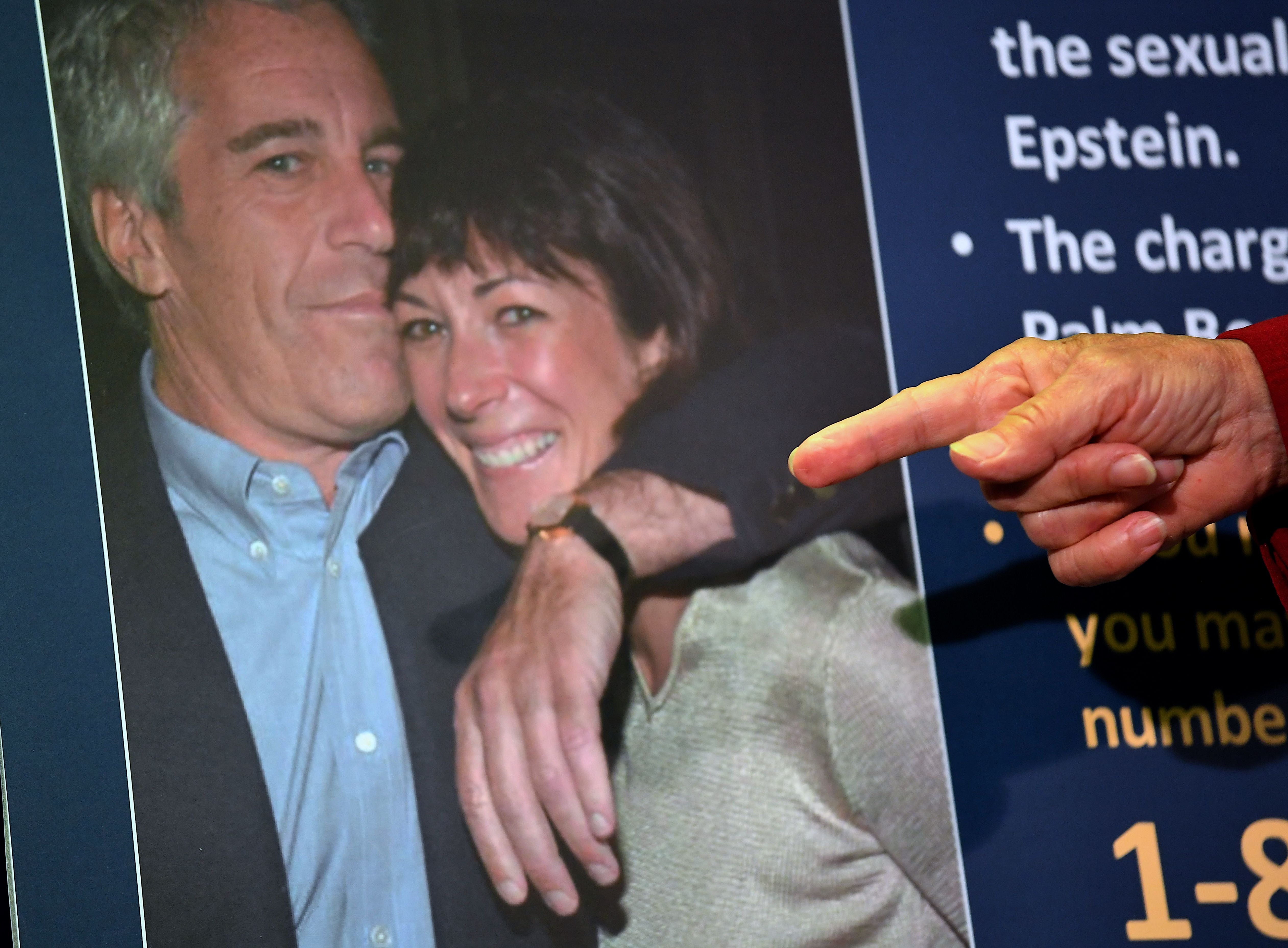
What will happen to the island now?
The government of the Virgin Islands has asked a judge to give it control of Little St James and Great St James, along with all other assets used to carry out the alleged sex trafficking operation.
Epstein’s executors are fighting that request, saying they want to use his assets to set up a relief fund for sexual assault victims. They want the Virgin Islands government to unfreeze his two islands so they can sell them off.
Ms George countered by accusing them mismanaging the estate and paying “for lawyers, landscaping, and helicopter fees, but not the brave women who have stepped forward to participate in the compensation fund”.
Meanwhile, Little St James has become a hotspot for morbid tourists, "urban explorers" and social media influencers attempting to access the island and make videos. Travelers frequently ask about it, and some local boat operators make it part of their tours.
Vernon Morgan, a taxi driver on St Thomas, told the Associated Press that he would rather people left it alone. "It brought some kind of notoriety to the Virgin Islands," he said. "We would much rather that the Virgin Islands be seen in a different light.”
This article was amended on 17 November 2021. It previously referred to the ‘comedian Steven Hawking’, but should of course have referred to the physicist Stephen Hawking.

